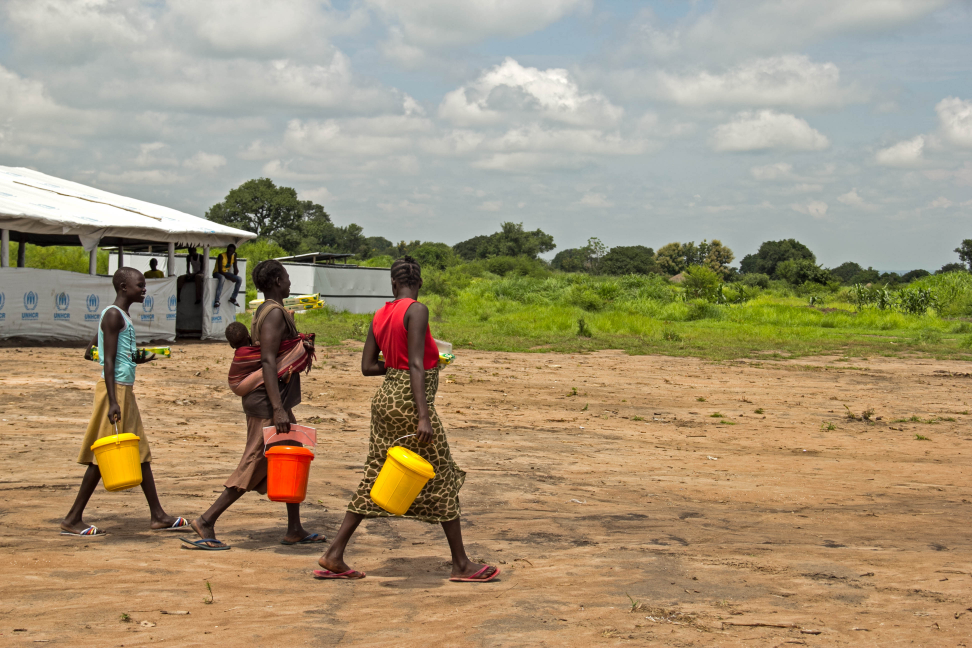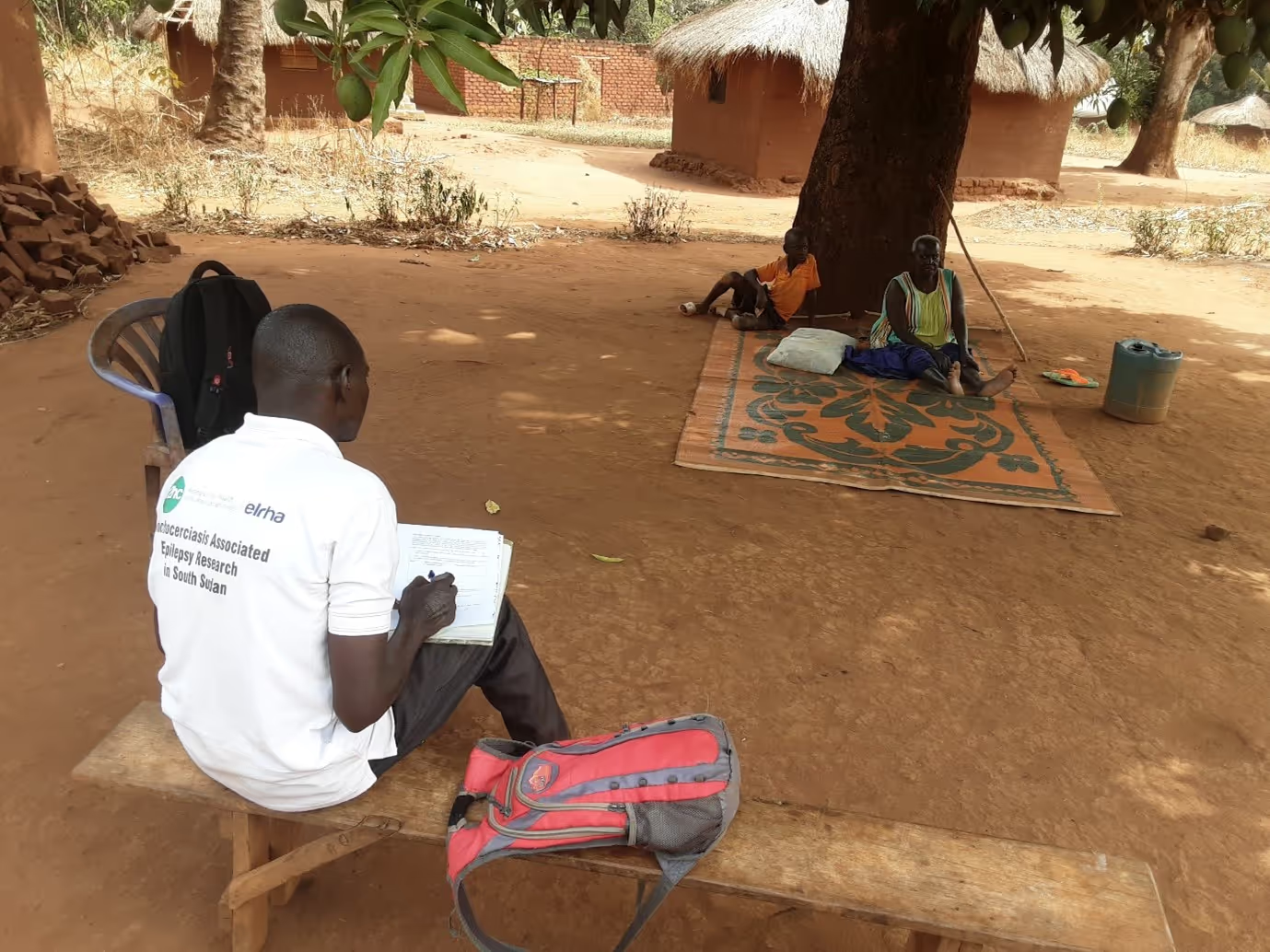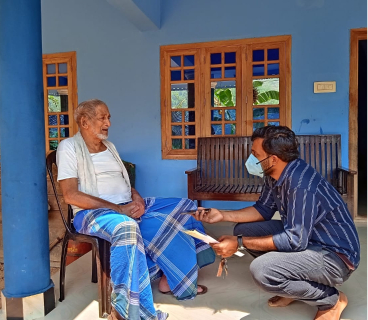Stopping Ebola at the Frontlines: Infection Prevention and Control in Sierra Leone

Stopping Ebola at the Frontlines: Infection Prevention and Control in Sierra Leone
Authors:
Dr. Stacey Mearns, Coordinator, Ebola Response Consortium
Ruwan Ratnayake, Epidemiologist, International Rescue Committee
In 2011, I arrived in northeast Sierra Leone to serve as a volunteer doctor at Kambia Government Hospital. I quickly became familiar with the challenges to providing clinical care in health care settings. Wards contained broken sinks without running water, making hand washing impossible. Soap and gloves were scarce and if available, kept under lock and key. Patients sometimes shared needles and syringes. Medical waste littered window sills and floors. Hospital cleaners lacked basic materials to clean wards and were not paid. In short, the necessary measures to prevent the transmission of infectious diseases, known as infection prevention and control, were largely absent. I could see that staff and patients were at risk of infection in health care facilities, but I could not have fathomed the way in which Ebola would expose this reality’s most tragic consequences.
As Ebola began spreading across Sierra Leone in 2014, I transitioned into a role with the International Rescue Committee and the Ebola Response Consortium supporting a national response to the epidemic in Sierra Leone. The health facilities quickly became amplification sites for the spread of the Ebola, contributing to the deadliest, longest and most widespread epidemic of the disease ever recorded. Health care facilities became critical frontlines for Ebola epidemic, and its eventual end.
At the early onset of the outbreak, it became abundantly clear that infection prevention and control across all health facilities in the country would be essential to stop and contain the spread of Ebola. We found that the majority of healthcare worker infections did not occur in dedicated Ebola treatment units, but in government hospitals and primary health care facilities. Staff who worked in primary health care facilities lacked the means to protect themselves — sometimes lacking even the most basic needs, such as gloves and running water — although they were among the first to come into contact with Ebola cases. The consequences were devastating in a country with small numbers of skilled healthcare workers. In Sierra Leone, a total of 307 healthcare workers were infected with Ebola, and 72% of them died. International and national actors recognized that strong systems and practices was critical to stopping the spread of the disease. The Ministry of Health and Sanitation (MoHS) with support from partners, such as the International Rescue Committee, began to embed infection prevention and control across all health facilities.
In 14 months, the Ministry of Health and Sanitation trained infection prevention and control focal persons in all health facilities and developed national IPC policy and guidelines. Committees were established in districts and hospitals, in addition to a multi-sector National IPC Advisory Committee. During the Ebola response and early recovery, the Ebola Response Consortium, a group of non-governmental organizations led by the International Rescue Committee, supported infection prevention and control at nearly 1,200 peripheral health facilities and 22 Government hospitals. Infection prevention and control mentors have been placed at 22 hospitals, and health facilities have received over 24,000 supervision visits. Over 12,000 frontline healthcare workers have been trained in infection prevention and control. Water, sanitation and waste management infrastructure upgrades are taking place at 22 hospitals and 128 health facilities, which will enable clean water to flow in and waste to flow out.
Scaling up infection prevention and control rapidly and widely proved to be immensely challenging — and required insight on how it could be possible. IRC conducted research in collaboration with Charité – Universitätsmedizin, Durham University and the University of Sierra Leone to examine barriers to infection prevention and control in some of the health facilities supported by the IRC in Bo and Kenema Districts during December to January 2014-2015. Through a mix of qualitative and quantitative methods, we found that health workers felt positive about the protection offered by personal protective equipment. However, we observed gaps in practice stemming due to the tedious nature of hand-washing, glove changing and screening protocols required, and the precision required to carry out each task safely. The research also raised important questions about how health workers view these practices during a raging epidemic and how to sustain these practices in between epidemics, where vigilance is crucial. Finally, the research gave us a window in the psychological toll among health workers who coped day to day with Ebola, the unseen enemy.
On a recent visit to Bo Hospital, I was overwhelmed by what I saw. The results of sufficient support and investment in infection prevention and control have been transformative. Wards were clean with a smell of disinfectant in the air, and bins were in place to separate waste on all wards. No medical waste was in sight. Staff wore personal protective equipment while delivering care to patients. Sinks with running water were available in all clinical areas, and showering facilities were in place for patients. A dedicated team at the hospital conducted regular assessments of infection prevention and control in wards and provided continuous training and mentorship for all staff. I thought about how long it had taken countries like the United Kingdom to institutionalize infection prevention and control, and was overwhelmed by how far Sierra Leone had come in such a short period of time.
Infection prevention and control is the gateway to ensuring the delivery of safe and routine healthcare and the foundation of a truly resilient health system. Health care workers and facilities are not only the frontlines against the Ebola epidemic, but against the numerous threats facing the lives and well-being of those they serve. In just two years years, Sierra Leone has highlighted the risks of neglecting infection prevention and control and the possibility to strengthen this critical foundation.
The returns of this investment have included the end of a historic outbreak, which are undoubtedly worth celebration. But I am also looking forward to what lies ahead. I hope that these efforts have laid the foundations for safer, quality health service delivery, the benefits of which will be seen by many for generations to come.
Stay updated
Sign up for our newsletter to receive regular updates on resources, news, and insights like this. Don’t miss out on important information that can help you stay informed and engaged.
Related articles



Explore Elrha
Learn more about our mission, the organisations we support, and the resources we provide to drive research and innovation in humanitarian response.